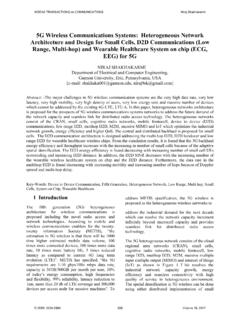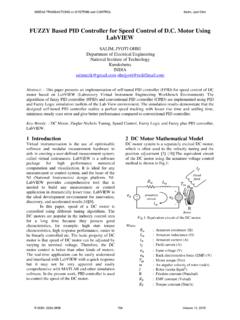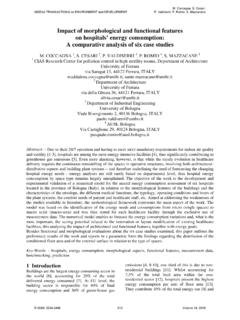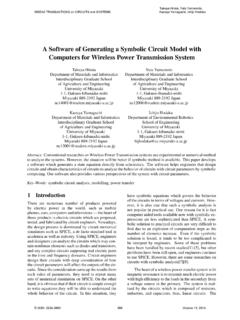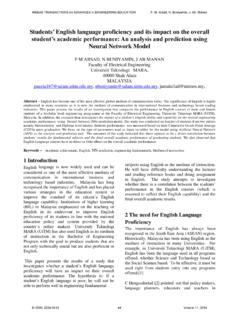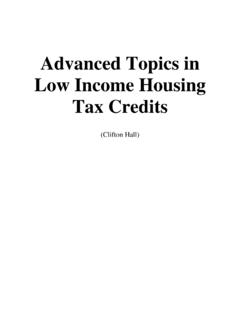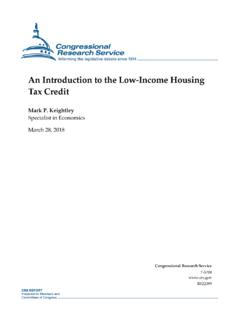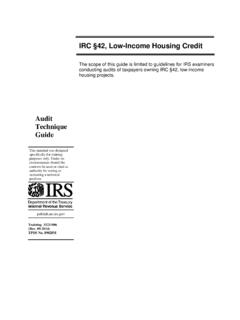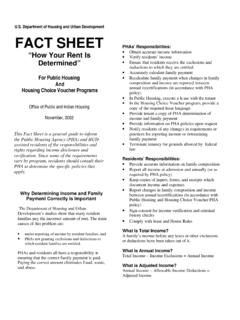Transcription of Housing for Poor People: A Review on Low Cost Housing ...
1 Housing for poor people : A Review on Low cost Housing Process in Malaysia B BAKHTYAR, A ZAHARIM, K SOPIAN, S MOGHIMI, Solar Energy Research Institute (SERI). Level 3, Perpustakaan Tun Sri Lanang, Universiti Kebangsaan Malaysia, 43600 Bangi, Selangor, Malaysia Abstract: - The main emphasis of Malaysia s Housing policy is on the provision of adequate, affordable and quality Housing for all Malaysians. The government is encouraging the private sector to produce low income Housing in affordable prices. But the scarcity and high cost of land in urban areas raise costs of labors and materials and affect low- cost Housing programs. This research is an overview to Malaysia low cost Housing s need and Malaysian approach to low cost Housing (LCH). In this study the process of a sample LCH has defined and barriers and difficulties in constructing LCH has discussed. The results confirmed that making balance between low income obligations and developer s profit-making is the key element for building more LCH in the country.
2 Key-Words: - Low cost Housing (LCH), Low cost settlement, Low income Housing , Affordable Housing , 1 Introduction Compared to 30 years ago, the meanings of house and Housing have drastically changed. Standards have improved and satisfaction elements differ during these periods. Also, new legislation in different countries confirms that the opinion of governments has changed and they are more involved in Low-Income Housing , now. Malaysia as a developing country and one of Asia s tigers is growing rapidly and is aiming to become a developed nation by 2020. Malaysia is a nation of two distinct geographical regions. Peninsular Malaysia includes large cities, and has active agricultural, industrial and service economy. Across the South China Sea lies East Malaysia. East Malaysia, spreading along much of the northern coast of the island of Borneo, is a land of forests and plantations.
3 The federal government and state governments support public Housing schemes in urban areas yet many families are not reachable through these programs. Affordability is an issue. Land and Housing costs are often too high for the 4% of the population who live below the poverty level [1]. Families find themselves living in squatter communities in larger cities. In the countryside, Housing needs are more acute and there is less formal help. Forecast shows that Malaysia s population in 2010 will be million people with average growth annually. According 9th Malaysia Plan (9MP), of the population in 2010 would be living in urban areas and of population will be under 14 years old [2]. This large percentage of young people shows future demand for Housing . Limited land is another problem for planning and Housing in addition to large population growth.
4 Poverty in Malaysia was reduced from in 1990 to in 1995, exceeding the Sixth Plan target of During the Sixth Plan period, the focus of anti-poverty programs was the hardcore poor . The action to eliminate hardcore poverty was implemented through a special program known as the Development Program for the Poorest. As a result, the rate of hardcore poverty decreased from in 1990 to in 1995 [3]. WSEAS TRANSACTIONS on ENVIRONMENT and DEVELOPMENTB. Bakhtyar, A. Zaharim, K. Sopian, S. MoghimiE-ISSN: 2224-3496126 Issue 2, Volume 9, April 2013To alleviate poverty, the government applied various programs and projects intended for rural and agricultural households. Among others, the poor participated and benefited from projects such as the Integrated Agricultural Development Projects focused on the provision of agriculture infrastructure, replanting schemes, land consolidation and rehabilitation and support services [4].
5 In addition, greater employment opportunities from off-farm and non-farm activities helped to increase the income of poor households. In summary, Housing in Malaysia needs to be expedited for sustainable growth as part of economic and social activities. 2 Background of Housing Policies in the World All Housing policy documents in the world in recent years confirm that governors and planners have to promote full Housing accessibility for high risk people including the disabled and women as heads of families, which can be reflected in gender equality in policies, programs and LIH projects as sustainable human settlements development. On December 1948, the general assembly of the United Nations adopted and proclaimed the Universal Declaration of Human Rights. Article number 22 mentions: Everyone, as a member of society, has the right to social security and is entitled to realization, through national effort and international co-operation and in accordance with the organization and resources of each state, of the economic, social and cultural rights indispensable for his dignity and the free development of his personality [5] Housing rights are unmistakably part of international human rights law [6].
6 The right to adequate Housing is embedded in the Universal Declaration of Human Rights (1948) and major international human rights treaties such as the International Covenant on Economic, Social and Cultural Rights. The second United Nations Conference on Human Settlements (Habitat II) [7], held on 3-14 June 1996 in Istanbul, Turkey, set out important changes in the approach to the development of human settlements in an urbanizing world. The Habitat Agenda, the main document adopted by the 171 UN member states in Istanbul, recognizes that adequate Housing is a fundamental human right. In this conference, members reconfirmed that adequate shelter is for all and reaffirmed sustainable human settlements, enablement and participation, gender equality, financing shelter and human settlements, international cooperation for helping poor people [7].
7 Five years after Habitat II, the General Assembly of the United Nations held a special session to Review and appraise implementation of the Habitat Agenda worldwide under the name Istanbul+5. The dialogues focused on some of the main outputs proposed by the Habitat secretariat for the Istanbul+5 exercise, namely: a declaration on the norms of good urban governance [8]; a World Charter of Local Self- Government and; a declaration on secure tenure. UN members renewed a rights-based approach to the Habitat Agenda and stressed issues such as women and land inheritance, slum upgrading and alternatives to forced evictions. This dialogue helped define a consultative process towards the development of a normative framework for security of tenure. Members urged Habitat to utilize the preparatory process for Istanbul+5 to enhance the draft declaration on secure tenure [9].
8 In the literature Review of the study, it is found that new problems in Housing came about because many poor families in Asia, Latin America, Africa and even in developed countries, have no access to mortgages or loans for building or buying a home. According to Peter Ward (2001, ), lack of access to credit forces families to make do with inadequate resources, to live and work in multi-functional spaces combining makeshift shacks, partly finished rooms, and temporary partitions for walls [10]. The failure of many poor families to access mortgage or different loans is often viewed as a symptom of greater underlying problems of poverty, low wages and unemployment in the country. Access to formal financing, considered distant from average household income levels, is an important determinant of Housing conditions [10].
9 WSEAS TRANSACTIONS on ENVIRONMENT and DEVELOPMENTB. Bakhtyar, A. Zaharim, K. Sopian, S. MoghimiE-ISSN: 2224-3496127 Issue 2, Volume 9, April 2013 Research shows that financing institutions favour households with above-average incomes, employed in the formal sector, and where the head of household is male. Even Housing finance institutions aimed at assisting low-income families have often been inaccessible to the majority of the poor people . 3 Low Income Housing in Malaysia Malaysia had been faced with increased population from million in 2000 to 25 million people in 2008. Yet, this is when the population growth rate decreased from 2% in 2000 to in 2008. During this period, the birth rate and death rate have both decreased. Life expectancy has increased from less than 71 years to more than 73 years. Gross Domestic Production increased from 207 in 2004 to 358 in 2008 which decreased the number of poor people significantly.
10 It means that GDP has increased from $9000 in 2004 to $14,400 in 2008 per capita [11]. Statistics show that the population under poverty line has decreased from 8% in 2002 to in 2008 and %4 in 2009 [11]. On the other hand, the labour force has increased from 9,300,000 in 2000 to 10,910,000 in 2008. Because of around 3,000,000 foreign labours in Malaysia, the fixed rate for minimum wage has generated discussions among different groups [12]. On May 2, 2008 Malaysia s top union chief called for a minimum wage of RM 1,200 ($375) to help workers cope with soaring food and fuel prices but this has yet to be practiced. The Malaysian Trade Union Congress (MTUC) presented a memorandum on Oct 7, 2008 to the Human Resources Ministry, highlighting the numerous threats faced by workers.

